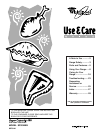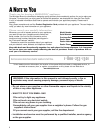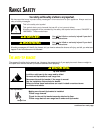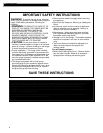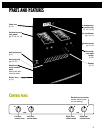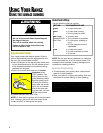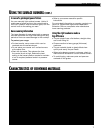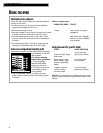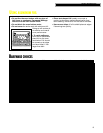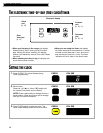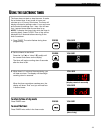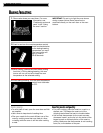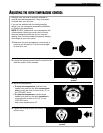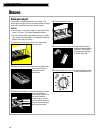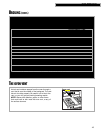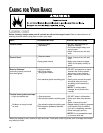
7
USING YOUR RANGE
USING THE SURFACE BURNERS (CONT.)
In case of a prolonged power failure
You can manually light surface burners. Hold a lit
match near a burner and turn the control knob to
the LIGHT position. After the burner lights, turn the
control knob to the setting you want.
Home canning information
The large diameter of most water-bath or pressure
canners combined with high heat settings for long
periods of time can cause damage to the cooktop.
To protect your range:
• For best results, use a canner which can be
centered over the surface burner.
• Do not place your canner on 2 surface burners
at the same time.
• Start with hot water. This reduces the time
the control is set on high. Reduce the heat
setting to the lowest position needed to maintain
a boil or required pressure levels in a pressure
canner.
•
Refer to your canner manual for specific
instructions.
For up-to-date information on canning, contact your
local U.S. Government Agricultural Department
Extension Office or companies who manufacture
home canning products.
Using the right cookware makes a
big difference
• The pan should have a flat bottom, straight sides,
and a well-fitting lid.
• Choose medium to heavy gauge (thickness)
cookware.
• The pan material (metal or glass) affects how
quickly and evenly the pan heats.
• When using glass or ceramic cookware, check to
make sure it is suitable for use on surface burners.
• To avoid tipping, make sure pots and pans are
centered on the grates.
CHARACTERISTICS OF COOKWARE MATERIALS
The pan material affects how fast heat transfers from the surface cooking area through the pan material and how
evenly heat spreads over the pan bottom. Choose pans that provide the best cooking results.
Aluminum
• Heats quickly and evenly.
• Use for all types of cooking.
• Medium or heavy thickness is best for most cooking.
• Used as a core or base in cookware to provide even heating.
Cast iron
• Heats slowly and evenly.
• Good for browning and frying.
• Maintains heat for slow cooking.
• Can be coated with porcelain enamel.
Ceramic or
ceramic glass
• Heats slowly and unevenly.
• Use on low to medium settings.
• Follow manufacturer’s instructions.
Copper
• Heats very quickly and evenly.
• Used as a core or base in cookware to provide even heating.
Earthenware
• Can be used for cooktop cooking if recommended by the
manufacturer.
• Use on low settings.
Porcelain enamel-on-steel or
enamel-on-cast iron
• See cast iron and stainless steel.
Stainless steel
• Heats quickly but unevenly.
•
A core or base of aluminum or copper on the cookware provides
even heating.
• Can be coated with porcelain enamel.



